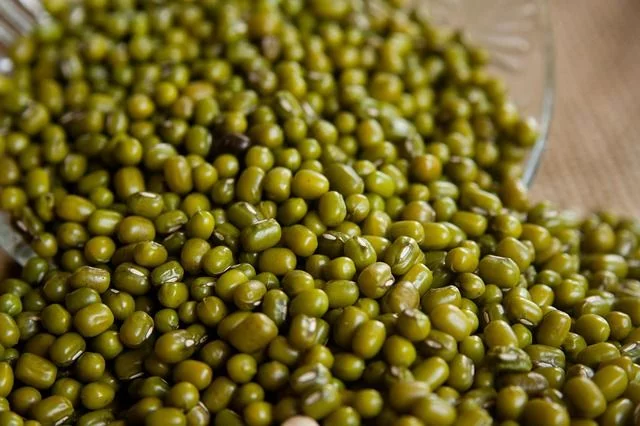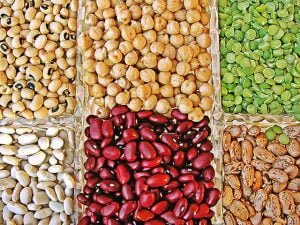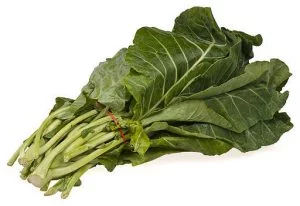Green grams, locally known as ndengu, are also known by other names such as mung beans and moong beans. Green grams are beans, which means they belong to the family of legumes that includes other common beans like kidney beans (madondo), black beans (njahi) etc.
Compared to these other beans, they are much smaller, but that’s not to mean they’re not just as nutritious. Green grams, like most of these other pulses, are not only low in calories and fat, but also happen to be good sources of protein, fibre, and minerals.
Nutrient Content of Green Grams

Some of the nutrients found in significant quantities in green grams include: (per 100 grams of cooked (boiled) mature green grams)
- Dietary fibre – 7.6 g
- Protein – 7.02 g
- Thiamine (B1) – 0.164 mg
- Riboflavin (B2) – 0.061 mg
- Niacin (B3) – 0.577 mg
- Pantothenic acid (B5) – 0.41 mg
- Vitamin (B6) – 0.067 mg
- Folate (B9) – 159 μg
- Calcium – 27 mg
- Iron – 1.4 mg
- Magnesium – 48 mg
- Manganese – 0.298 mg
- Phosphorus – 99 mg
- Potassium – 266 mg
- Zinc – 0.84 mg
Source: USDA National Nutrient Database for Standard Reference1
Health Benefits
1. Good Source of Healthy Affordable Protein
Green grams can be a good alternative source of protein for those that can’t afford meat protein or for those that are vegetarians. 100g of boiled green grams provide 7.6g of protein, a moderate amount that can help you meet your recommend daily intake (0.8g per kilogram of body weight).1
Though much less compared to what meat can provide, protein from green grams and other plant sources, is lean meaning it doesn’t contain saturated fat which can be found in fatty cuts of meat.
2. Good for Weight Management
Green grams are low in calories and fat providing just 105kcal and 0.38g respectively per 100g of cooked (boiled) mature green grams.1 This is due to their complex carbs and fibre, which also makes them slow to digest.
As a result, they release energy much slowly, increasing the feeling of fullness. For this reason, they are ideal for those watching their weight. What’s more, as we’ve already seen, it provides lean protein which doesn’t contain fat as that found in most fatty meats like beef.
3. Good Source of Dietary Fibre
Green grams provide moderate amounts of dietary fibre (7.6g/100g) which is key for a healthy digestive system as it increases the stool volume and transit time.
The fibre also binds toxins and cholesterol, aiding their removal from the body and thereby lowering blood cholesterol which reduces the risk of one getting cardiovascular diseases.
4. Rich source of Folate
Green grams are quite rich in folate providing about 40% (159 μg/100g) of the recommended daily intake.1
Folate is a very important nutrient, especially during pregnancy. It helps prevent cases of neural tube defects (e.g. spinal bifida) and also ensures optimal development of tissues and cells.
This is the key reason why pregnant women are supplemented with folate during pregnancy, as they have to cater for the increased need of folate.
Green grams can therefore be good additions to the diets of pregnant and lactating women to help them get adequate folate.
5. Good Source of Iron
Green grams like most pulses are good sources of iron, an essential mineral which aids the body to transport oxygen, boost energy production and metabolism.
Iron is also important to prevent iron deficiency anaemia, which is the most common nutrient deficiency worldwide.
To increase availability of this iron for absorption, it’s recommended you eat iron rich foods, not just green grams, along with foods rich in Vitamin C which can be found in most fruits (e.g citrus fruits, guavas) and greens vegetables.
6. Good Source of Other Minerals
Green grams are not only good sources of iron but other essential minerals including magnesium, calcium, zinc, manganese, potassium, and phosphorus.
Eating them can therefore ensure you get your daily dose of these minerals, which are vital for the normal functioning of the body.
Getting the most out of your Green Grams
Like most pulses, green grams are also suspect to anti-nutrients, which affect the absorption of most of the minerals we’ve highlighted above.
To some people, they may also cause flatulence and heart burn, which may be enough reason for some to avoid eating them for good.
To ensure you get the most out of your green grams whilst reducing these downsides, there are certain measures you can take to reduce anti-nutrients as explained in our article on pulses.
REFERENCES
1. USDA National Nutrient Database for Standard Reference – Mung beans, mature seeds, cooked, boiled, without salt





